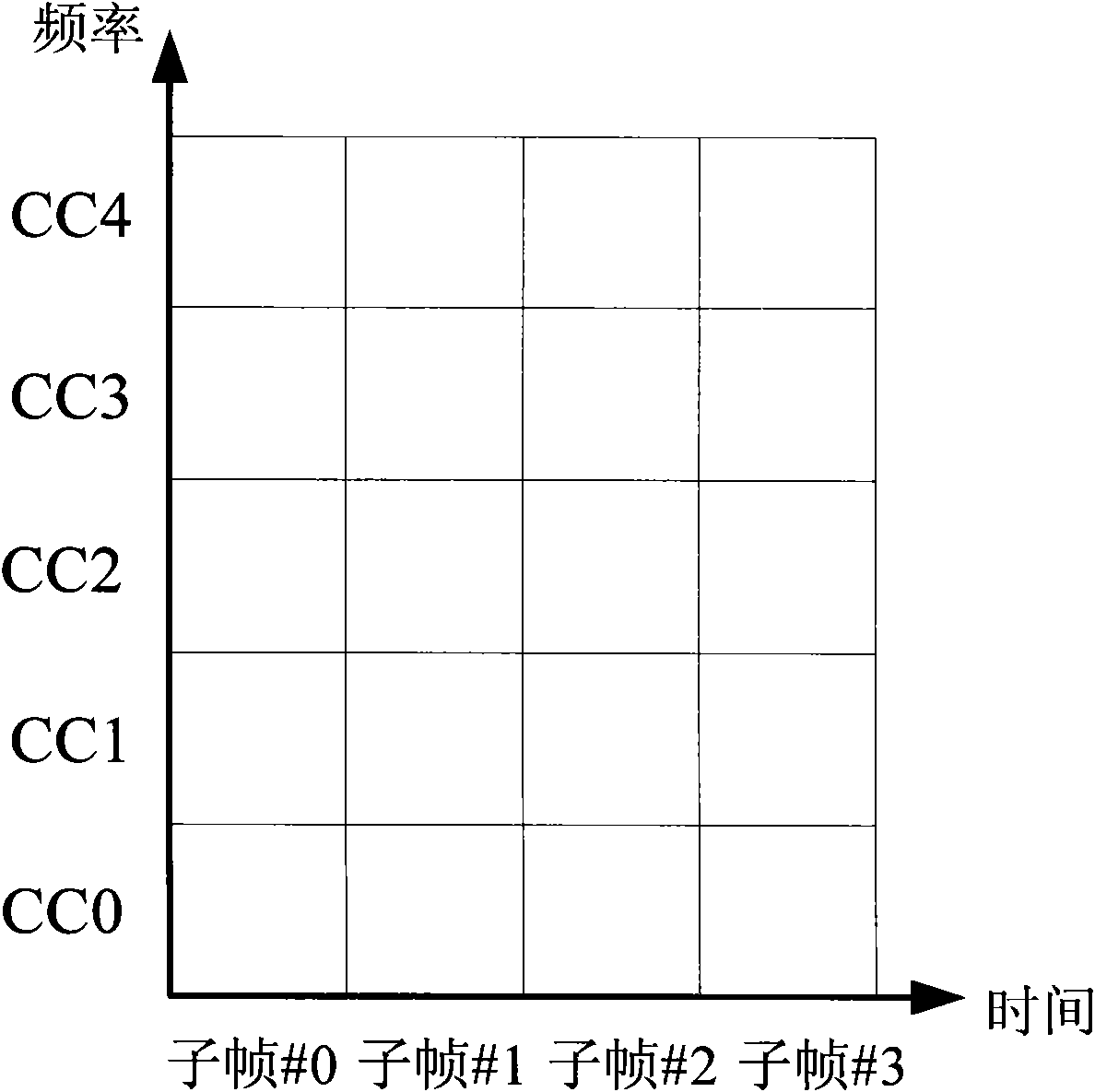Method for sending acknowledgement information and user terminal
A technology for confirming information and sending methods, which is applied in wireless communication, electrical components, etc., and can solve problems such as inability to feed back multiple confirmation information
- Summary
- Abstract
- Description
- Claims
- Application Information
AI Technical Summary
Problems solved by technology
Method used
Image
Examples
example 1
[0157] Example 1: One uplink subframe corresponds to X downlink subframes, Y cells are configured on each downlink subframe, and the number of transmission blocks transmitted by cell j configured on downlink subframe i is Z i,j , where X can be 1, 2, 3, 4, 9, Y can be 1, 2, 3, 4, 5, Z i,j Can be 1, 2;
[0158] When X=2, Y=5, it is assumed that the base station schedules 3 PDSCHs with PDCCHs on the first downlink subframe, and schedules 2 PDSCHs with PDCCHs on the second downlink subframe;
[0159] Then, 5 feedback bits may be allocated to each downlink subframe;
[0160] When the UE does not detect a PDSCH with a PDCCH on the second downlink subframe, the corresponding feedback bits are NACK, NACK, NACK, NACK, NACK;
[0161] When the UE determines that the number of PDSCHs sent by the base station to itself in the first downlink subframe is 3 based on the detection of DAI in the first downlink subframe, if the number of PDSCHs with PDCCH detected in the first downlink subframe...
example 2
[0162] Example 2: One uplink subframe corresponds to X downlink subframes, Y cells are configured on each downlink subframe, and the number of transmission blocks transmitted by cell j configured on downlink subframe i is Z i,j , where X can be 1, 2, 3, 4, 9, Y can be 1, 2, 3, 4, 5, Z i,j Can be 1, 2;
[0163] When X=3, Y=5, it is assumed that the base station schedules 3 PDSCHs with PDCCHs in the first downlink subframe, schedules 2 PDSCHs with PDCCHs in the second downlink subframe, and schedules 2 PDSCHs with PDCCHs in the third downlink subframe. 5 PDSCHs with PDCCHs are scheduled on each downlink subframe;
[0164] Allocating four feedback bits for the third downlink subframe and allocating three feedback bits for each of the remaining subframes;
[0165] When the UE does not detect a PDSCH with a PDCCH on the second downlink subframe, the corresponding feedback bits are NACK, NACK, NACK;
[0166] When the UE determines that the number of PDSCHs sent by the base statio...
example 3
[0168] Example 3: An uplink subframe corresponds to a configuration window of X downlink subframes, Y cells are configured on each downlink subframe, and the number of transmission blocks transmitted by cell j configured on downlink subframe i is Z i,j , where X can be 1, 2, 3, 4, 9, Y can be 1, 2, 3, 4, 5, Z i,j Can be 1, 2;
[0169] When X=4, Y=5, it is assumed that the base station schedules 5 PDSCHs with PDCCHs in the first downlink subframe, schedules 2 PDSCHs with PDCCHs in the second downlink subframe, and schedules 2 PDSCHs with PDCCHs in the third downlink subframe. 5 PDSCHs with PDCCHs are scheduled on the first downlink subframe, and 5 PDSCHs with PDCCHs are scheduled on the fourth downlink subframe;
[0170] Three feedback bits may be allocated to the third and fourth downlink subframes respectively, and two feedback bits may be allocated to the remaining subframes.
[0171] When the UE does not detect a PDSCH with a PDCCH in the third downlink subframe, the corr...
PUM
 Login to View More
Login to View More Abstract
Description
Claims
Application Information
 Login to View More
Login to View More - R&D
- Intellectual Property
- Life Sciences
- Materials
- Tech Scout
- Unparalleled Data Quality
- Higher Quality Content
- 60% Fewer Hallucinations
Browse by: Latest US Patents, China's latest patents, Technical Efficacy Thesaurus, Application Domain, Technology Topic, Popular Technical Reports.
© 2025 PatSnap. All rights reserved.Legal|Privacy policy|Modern Slavery Act Transparency Statement|Sitemap|About US| Contact US: help@patsnap.com



